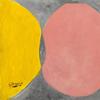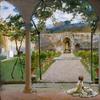Smithsonian American Art Museum Acquires Major Collection of Self-Taught American Art
- WASHINGTON, DC
- /
- December 13, 2016

The Smithsonian American Art Museum announced today a gift of 93 works of art from the collection of Margaret Z. Robson. The Robson collection includes important paintings, drawings and sculptures by 48 major self-taught artists, including James Castle, Ulysses Davis, Thornton Dial Sr., William Edmondson, Howard Finster, Bessie Harvey, Judith Scott, Bill Traylor and many others. The collection adds strength and depth to this specialty area of the collection with 11 new artists. The Robson gift comprises the largest acquisition of self-taught artworks in 20 years and signals the museum’s deep and lasting commitment to this area of artistic production.
The museum’s acquisition of the collection, given by her son, Douglas O. Robson, was approved by the museum’s Board of Commissioners at its November meeting.
“We are truly honored to be entrusted with the stewardship of this work,” said Leslie Umberger, curator of folk and self-taught art. “The Robson collection has enormous range. It includes major works, such as William Edmondson’s ‘Untitled (Birdbath)’ and Bill Traylor’s ‘Untitled (Seated Woman).’ A 1942 relief carving by Ulysses Davis is a key example of the early work of a master wood carver who would become known for his presidential busts and wild beasts. The collection also includes exceptional works by lesser-known artists such as Albert “Kid” Mertz, whose painted stack of 1,265 railroad spikes was part of his vivid painted environment, and Leroy Person, who carved patterns into the window sills and doors of his North Carolina home before creating a large body of similarly incised abstract woodcarvings.”
Robson began collecting the work of folk and self-taught artists in the 1980s and became a highly respected collector and advocate. The artworks she selected reveal her personal point of view and preference for works that exemplify a particular culture, time and place.

“Margaret Robson was a thoughtful woman, with a keen eye and a unique personal vision,” Umberger said. “She began collecting at a time when few grasped the inherent value of art that was often made amid challenging circumstances and by those who lacked the agency of the mainstream art world. The collection speaks of empowerment and a ‘can-do’ spirit, and it will be cherished and shared here at the Smithsonian American Art Museum.”
Currently, four works from the Robson collection—hanging mixed-media assemblages by Emery Blagdon—are on view in the museum’s first-floor galleries. Other pieces from the collection will debut in 2017. Five Bill Traylor paintings from the gift will be included in the 2018 retrospective “Between Worlds: The Art of Bill Traylor” that Umberger is organizing. The museum will produce an exhibition and book dedicated to the Robson collection in its entirety at a future date.
The Smithsonian American Art Museum was among the first major museums to collect works by self-taught artists and to advocate for a diverse populist voice within the context of what is traditionally considered great art. The museum began collecting this kind of work in 1970, when the astonishing “The Throne of the Third Heaven of the Nations’ Millennium General Assembly,” made by James Hampton, came to light in a makeshift studio not far from the museum following the artist’s death. Several donors made it possible for this iconic work to become the cornerstone of a collection that aimed to tell an ever-expanding story of America through the art of its people.
In the early 1980s and 1990s, Chuck and Jan Rosenak donated many important works to the museum. The museum’s largest single acquisition of works by self-taught artists came in 1986 with more than 500 works from the ground-breaking collection of Herbert Waide Hemphill Jr., which firmly established the museum’s ongoing commitment to this work. Important gifts from Bill Arnett, David L. Davies, the Kallir Family, Judy A. Saslow, Mike Wilkins and Sheila Duignan, and others followed, and the collection has grown to be one of the most visited and widely admired of its kind.
Recent exhibitions featuring major acquisitions have included “Untitled: The Art of James Castle” (2014), “Ralph Fasanella: Lest We Forget” (2014) and “Mingering Mike’s Supersonic Greatest Hits” (2015). The museum has had dedicated gallery spaces for folk and self-taught art for more than 45 years. A new installation of these galleries, organized by Umberger, opened to the public Oct. 21.
About the Smithsonian American Art Museum
The Smithsonian American Art Museum celebrates the vision and creativity of Americans with artworks in all media spanning more than three centuries. Its National Historic Landmark building is located at Eighth and F streets N.W., above the Gallery Place/Chinatown Metrorail station. Museum hours are 11:30 a.m. to 7 p.m. daily (closed Dec. 25). Admission is free. Follow the museum on Twitter, YouTube, Tumblr, Instagram, Facebook, Flickr, Pinterest, iTunes U and ArtBabble. Museum information (recorded): (202) 633-7970. Smithsonian information: (202) 633-1000. Website: americanart.si.edu.











100x100_c.jpg)




